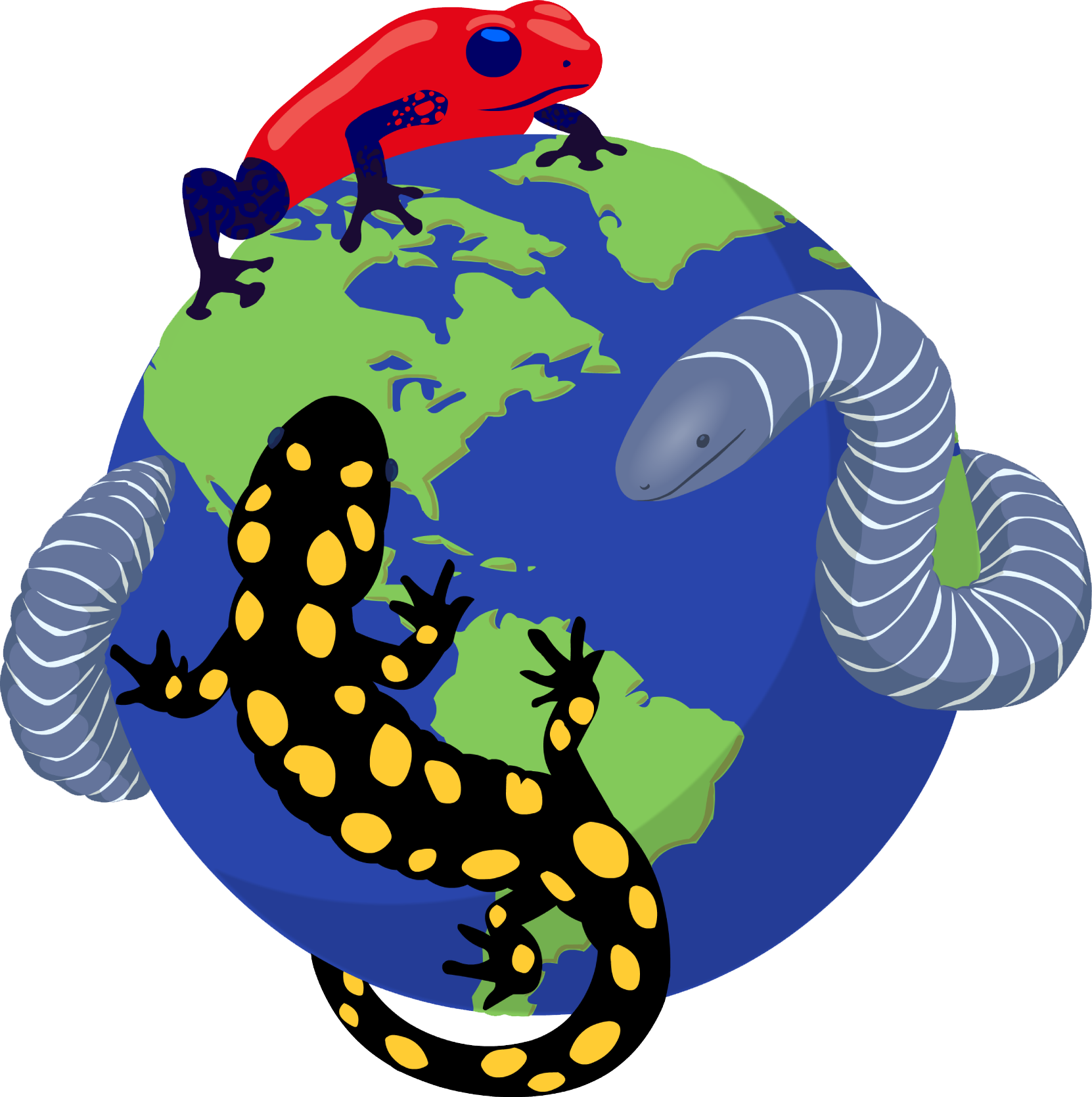|
Hyla heinzsteinitzi Grach, Plesser & Werner, 2007
Subgenus: Hyla | family: Hylidae subfamily: Hylinae genus: Hyla |
| Species Description: Grach, Plesser & Werner 2007 A new, sibling, tree frog from Jerusalem (Amphibia: Anura: Hylidae). Journal of Natural History 41 9 - 12: 709 - 728 | |
|
Taxonomic Notes: This is a taxon of dubious validity. Known with certainty only from a small pond in the center of Jerusalem. Circumstantial evidence suggests it is an introduced population of Hyla (Dryophytes) japonica, but this is not accepted by the describers. |
|
|
|
|
Description This species is capable of metachrosis, changing color during the diel cycle. In the daytime, the coloration can change from green to shades of brown or grey, occasionally spotted. The samples from the Mamilla reservoir are turquoise, though this may be a local mutation as samples from other localities do not show bluish color. By day the dark lateral stripe is clearly visible along the flank, generally fragmented into irregular spots, and lacking the inguinal branch of H. arborea. During the spotted phase of the daytime coloration, the gray, brown, or yellow background may have darker or lighter blotches. The presence of green blotches on a rust- or golden-brown background is unique to H. heinzsteinitzi. A white stripe, reduced and somewhat indistinct, runs along the posterior lip. Hidden parts of the legs, especially the thighs, are orange. At nighttime, the coloration varies with temperature, tending to be green at lower temperatures and brown at warmer temperatures. The lateral stripe pales at night, sometimes to the point of vanishing entirely. In captivity, the capacity for metachrosis develops four months after metamorphosis, and is estimated to occur at about six months post-metamorphosis for wild specimens. Hyla heinzsteinitzi is very similar to the sympatric H. savignyi, but can be distinguished by its truncate snout profile (vs. round in H. savignyi), a fragmented lateral stripe (vs. nearly complete in H. savignyi), a reduced white stripe on the lip, hidden parts of the legs being orange (vs. brown in H. savignyi), the additional spotted phase coloration of green blotches on a brown background, and the call structure, which has a short rise time followed by a long decay time in H. heinzsteinitzi (vs. a similar rise and fall time in H. savignyi). Also, in the Hyla heinsteinitzi specimens from the Mamilla reservoir, the "green" phase of the body color is actually turquoise, a color that is not present in H. savignyi specimens (or H. heinsteinitzi from other localities). Distribution and Habitat Country distribution from AmphibiaWeb's database: Israel
Life History, Abundance, Activity, and Special Behaviors The advertisement calls are unique and distinctive for this species, regardless of temperature effects or call function. Calls consist of a sequence of evenly spaced segments with a call duration of about 4.02 s at 22-28°C. Segments are notes with an average duration of 0.1001 s and an average repetition rate of 3.67 notes/sec. The energy peak for H. heinzsteinitzi is near the temporal beginning of each segment. In other words, the energy amplitude has a short rise time and a much longer decay time than others in the Hyla arborea group. H. savignyi’s segments are similar in length and have the energy peak in the middle. H. arborea’s and H. sarda’s energy peaks are near the end of the call. H. meridionalis’s energy peak is between the middle and the end, intermediate to those of H. savignyi and H. arborea. Trends and Threats Relation to Humans Possible reasons for amphibian decline Prolonged drought Comments
References
Grach, C., Plesser, Y., and Werner, Y. L. (2007). ''A new, sibling, tree frog from Jerusalem (Amphibia: Anura: Hylidae).'' Journal of Natural History, 41(9-12), 709-728. Originally submitted by: Matan Shelomi (first posted 2008-04-05) Edited by: Kellie Whittaker (2008-05-21) Species Account Citation: AmphibiaWeb 2008 Hyla heinzsteinitzi <https://amphibiaweb.org/species/6924> University of California, Berkeley, CA, USA. Accessed Feb 7, 2025.
Feedback or comments about this page.
Citation: AmphibiaWeb. 2025. <https://amphibiaweb.org> University of California, Berkeley, CA, USA. Accessed 7 Feb 2025. AmphibiaWeb's policy on data use. |


 Map of Life
Map of Life